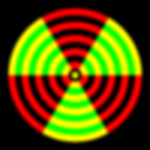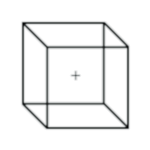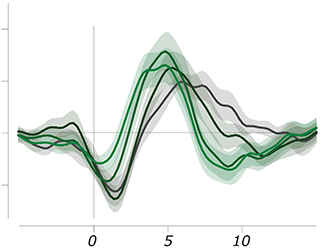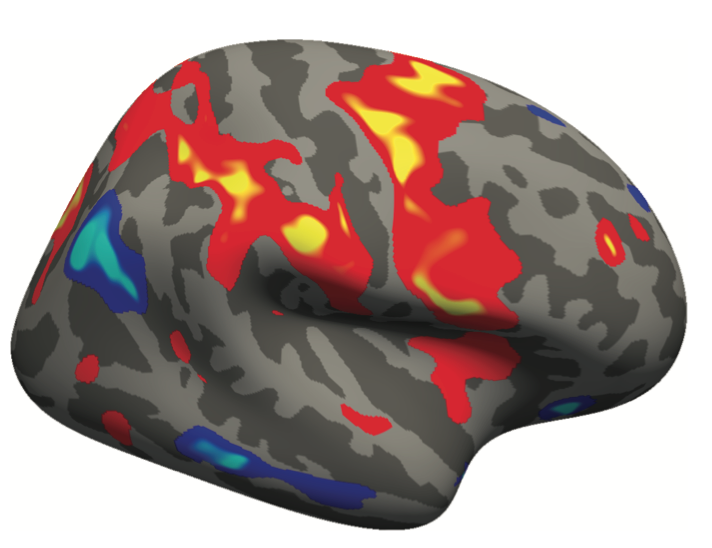Visual information that enters the brain is inherently ambiguous. This makes seeing a process in which it is essential to make decisions about what to perceive from this ambiguous stream of information - for example using information from the past to predict what will appear.
Bistable perception takes this to another level. It boosts the ambiguity inherent in all vision, by constraining the interpretations possible from a single input to (usually) two interpretations. These interpretations are mutually exclusive, however, meaning that only one will be perceived at each point in time. This first perceptual state doesn’t last indefinitely but will switch to perceptual dominance of the other interpretation, leading to a back-and-forth between perceptual states with the input being continually constant. The cool thing is, that when you undergo a change in perceptual state, you witness a change in the state of your visual brain in a more direct manner than at almost any other occasion ever.



History of Bistable Perception Research
Since the 19th century, scientific discussions have centered around the type of brain activity that ‘does’ bistable perception. Some researchers, starting with Hermann von Helmholtz, thought of changes of perception in bistability as a process strongly related to changes of attention. Another school of thought, started by Ewald Hering, conceptualised bistable perception more in terms of a simple, mechanistic process that transpires more-or-less automatically. This debate still goes on, and research from our lab plays a role in this debate.
With the advent of fMRI researchers could suddenly look into participants’ brains while they were experiencing bistable perception.  Letting their participants press a button whenever they saw a transition, and also created an experimental situation in which transitions were ‘replayed’ on the screen with the same instruction to the participants. Contrasting brain activations between these two situations, they thought, would show the brain mechanisms engaged in the endogenous changes of perception in bistability, over and above those engaged in exogenous visual changes. They found that frontal and parietal regions in the right side of the brain were specifically activated during ‘real’ vs ‘fake’ perceptual switches, like in the figure, right.
Letting their participants press a button whenever they saw a transition, and also created an experimental situation in which transitions were ‘replayed’ on the screen with the same instruction to the participants. Contrasting brain activations between these two situations, they thought, would show the brain mechanisms engaged in the endogenous changes of perception in bistability, over and above those engaged in exogenous visual changes. They found that frontal and parietal regions in the right side of the brain were specifically activated during ‘real’ vs ‘fake’ perceptual switches, like in the figure, right.
Our Bistable Perception Research
But what are these transition-related activations? Our lab has been involved in trying to tease apart the functional role of these activations. In these attempts, we have been guided by the impression that perceptual switches in bistability are complex cognitive phenomena involving task-switching, arousal etc. What happens in the brain is some blend of the factors that cause the switch, blended with those brain mechanisms that notice the switch, and those that prepare your motor response, as well as those brain mechanisms that switch from a detection-task to a timed-response (timed button press to the end of the switch) task. It is really hard to make an on-screen ‘switch’ resemble an endogenously generated one in exactly these perceptual and cognitive parameters. For instance, it is impossible to create a replay switch that can be mistaken for an endogenous switch - observers always see.
So, our focus is to tease apart the exact sequence of events that combine to form the brain’s response to perceptual switches. We have done so by creating replay switches that are more life-like than those used previously, and found that these more life-like transitions cause brain activations that are very comparable to those of actual switches[1]. Furthermore, we recently succeeded in something pretty cool: we were able to create a stimulus in which observers fail to notice a switch because the eyes’ images are so statistically similar. Then we found that these unnoticed switches cause only negligible brain activations[2]. These findings speak against the role of these brain activations causing the switches, but it remains unclear what brain activations relate to what cognitive factors in the process of perceiving and reporting switches. These switches in bistable perception are thus a very beautiful instance of complex decision-making processes, and a window on how articulated decision-making occurs in everyday situations.
References
-
Knapen, T., Brascamp, J., Pearson, J., van Ee, R. & Blake, R.
The role of frontal and parietal brain areas in bistable perception.
Journal of Neuroscience 31, 10293–10301 (2011). -
Brascamp, J., Blake, R. & Knapen, T.
Negligible fronto-parietal BOLD activity accompanying unreportable switches in bistable perception.
Nature Neuroscience (2015). doi:10.1038/nn.4130